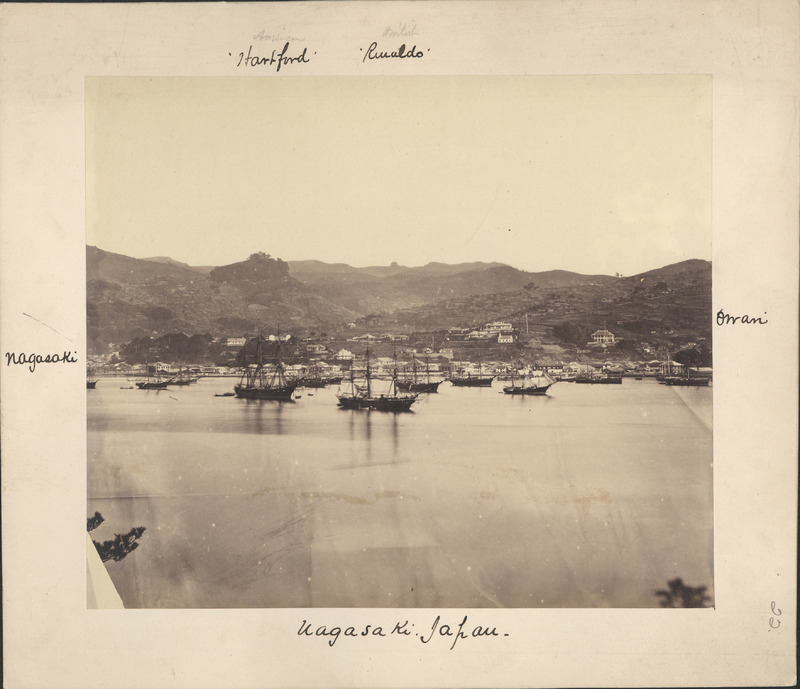American warships in Meiji-era Nagasaki
by Felice Beato, ca.1868
This view of the port of Nagasaki in about 1868 would be unremarkable if not for the caption. At first glance, the scene seems to document a busy commerce now opened in Japan, with a prosperous harbor packed with ships. Moored in the midst of this bustle, however, are the USS Hartford, flagship of the Asiatic Squadron of the U.S. Navy, and the British HMS Rinaldo, symbols of the degree to which western powers were exerting power over east Asia, using force when necessary to "open" ports and sea lanes to commerce. This is a velvet view of imperialism in the guise of commerce.
The photographer, Felice Beato, was a pioneer in several regards and was himself creature of empire. Venetian by birth and British by citizenship, he lived life as a global vagabond from the 1850s through 1870s. Traveling throughout Asia, camera in tow, he emerged as a pioneer in war photography during the Crimean War, and went on to document the Sepoy Rebellion, Second Opium War, and U.S. incursion into Korea. He was among the first western photographers to practice in India and China, and spent nearly fifteen years in Japan from 1863 to 1877.
Beato's studio in Japan produced some of the most important western images of life during the Meiji era, and often echoed the composition of contemporary woodblock prints. His legacy was carried forward by students and colleagues such as Kusakabe Kimbei, Ueno Hikoma, and Baron von Stillfried.

